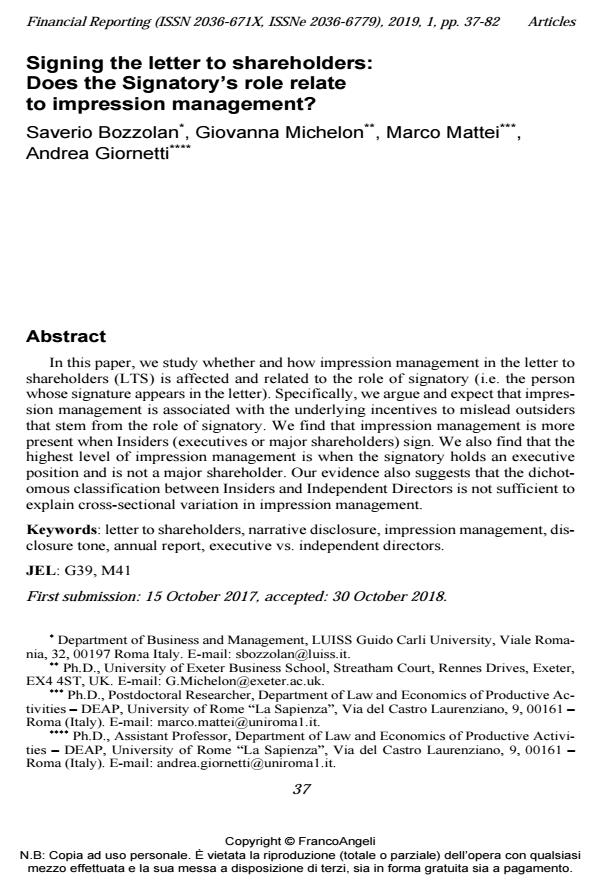Signing the letter to shareholders: Does the Signatory’s role relate to impression management?
Titolo Rivista FINANCIAL REPORTING
Autori/Curatori Saverio Bozzolan, Giovanna Michelon, Marco Mattei, Andrea Giornetti
Anno di pubblicazione 2019 Fascicolo 2019/1
Lingua Inglese Numero pagine 46 P. 37-82 Dimensione file 459 KB
DOI 10.3280/FR2019-001002
Il DOI è il codice a barre della proprietà intellettuale: per saperne di più
clicca qui
Qui sotto puoi vedere in anteprima la prima pagina di questo articolo.
Se questo articolo ti interessa, lo puoi acquistare (e scaricare in formato pdf) seguendo le facili indicazioni per acquistare il download credit. Acquista Download Credits per scaricare questo Articolo in formato PDF

FrancoAngeli è membro della Publishers International Linking Association, Inc (PILA)associazione indipendente e non profit per facilitare (attraverso i servizi tecnologici implementati da CrossRef.org) l’accesso degli studiosi ai contenuti digitali nelle pubblicazioni professionali e scientifiche
In this paper, we study whether and how impression management in the letter to shareholders (LTS) is affected and related to the role of signatory (i.e. the person whose signature appears in the letter). Specifically, we argue and expect that impression management is associated with the underlying incentives to mislead outsiders that stem from the role of signatory. We find that impression management is more present when Insiders (executives or major shareholders) sign. We also find that the highest level of impression management is when the signatory holds an executive position and is not a major shareholder. Our evidence also suggests that the dichotomous classification between Insiders and Independent Directors is not sufficient to explain cross-sectional variation in impression management.
Jel codes:G39, M41
- Narcissistic leaders and corporate cash Holdings: Evidence in China Penghua Qiao, Yang Long, Hung-Gay Fung, Erin Hui-Chuan Kao, in The North American Journal of Economics and Finance 101567/2022 pp.101567
DOI: 10.1016/j.najef.2021.101567
Saverio Bozzolan, Giovanna Michelon, Marco Mattei, Andrea Giornetti, Signing the letter to shareholders: Does the Signatory’s role relate to impression management? in "FINANCIAL REPORTING" 1/2019, pp 37-82, DOI: 10.3280/FR2019-001002